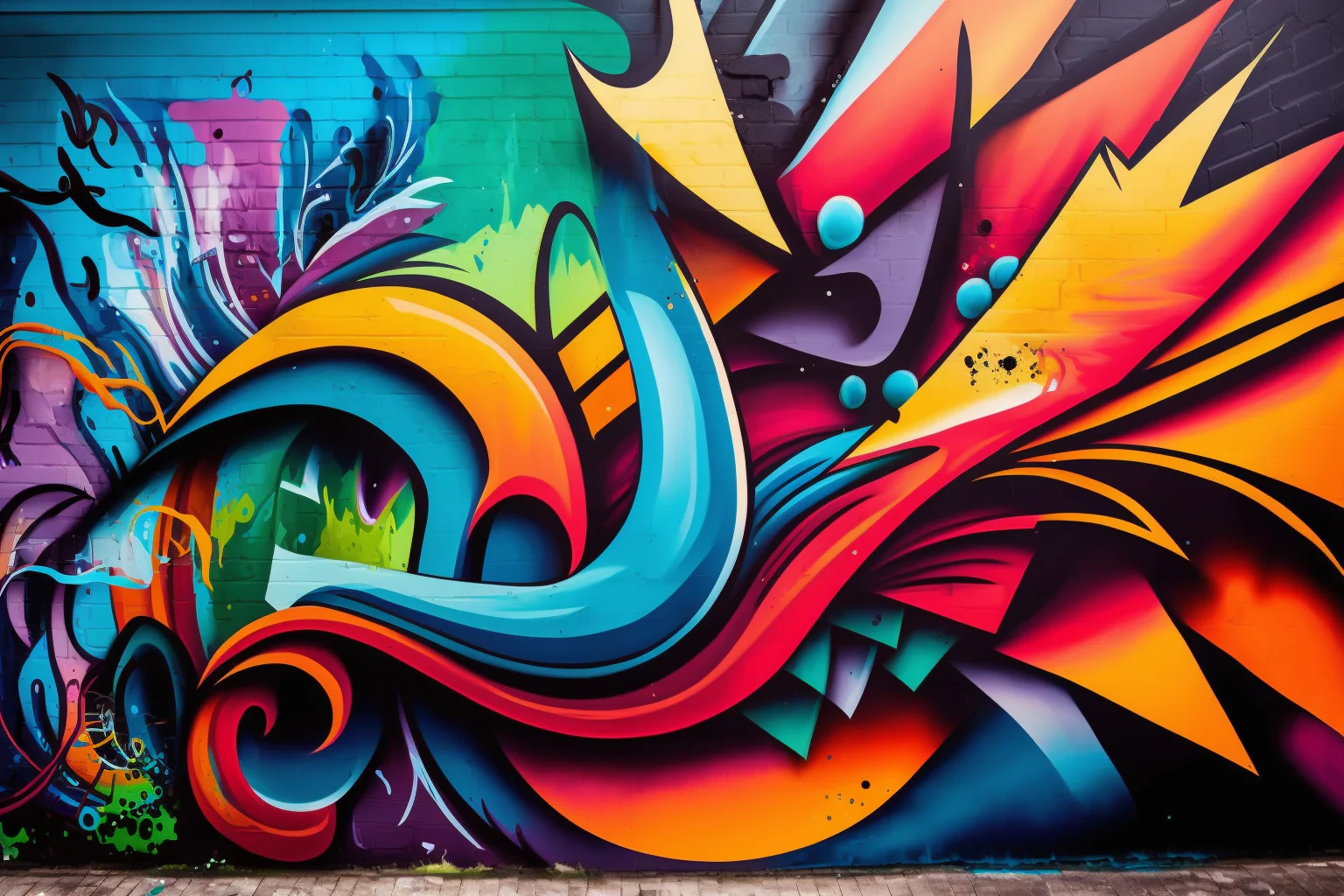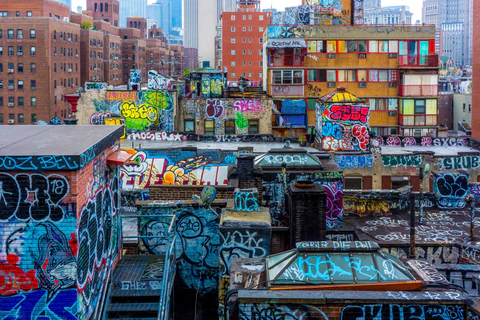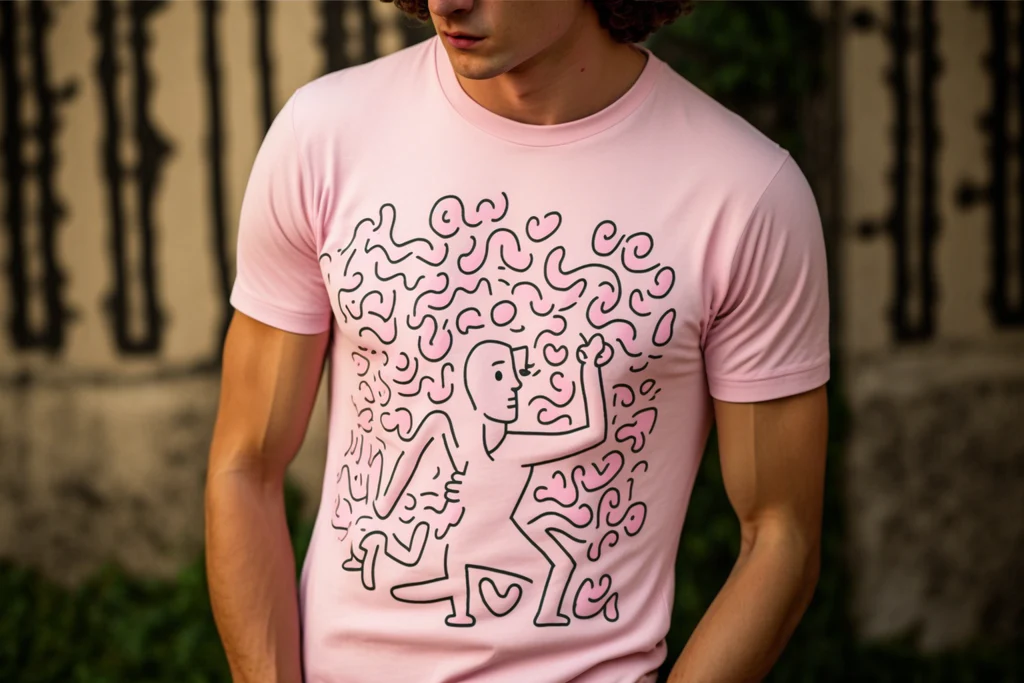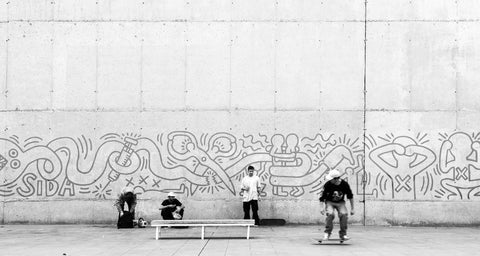Why Graffiti is Art?

Graffiti is an art that has been around for centuries, with some of the earliest known examples being found in ancient Egypt. It is created by spray painting or writing on walls and other surfaces, typically in public places such as streets and buildings.
Graffiti often gets labeled as vandalism due to its rebellious nature, but it can also be considered an artistic expression with cultural significance. This type of artwork often uses bright colors and bold lines to create unique designs that are visually striking. Many graffiti artists use their work as a way to tell stories about current events or express their own personal experiences through the medium of street art.
One thing that makes graffiti stand out from traditional kinds of art is its location – it’s usually located in places where people would not expect to see artwork like galleries or museums. This element adds an unexpected surprise when someone stumbles upon it while walking down the street or taking public transportation.
The Message Behind the Street Art: Is it Vandalism or Political and Social Expression
Graffiti is often viewed as an act of vandalism, but when looking closer, the message behind graffiti art can be a powerful one. Street artists take to walls and other public spaces to communicate their beliefs and values in ways that traditional artwork cannot.
Graffiti conveys emotions of hope or despair, speaks up for those who are voiceless, and has the potential to bring attention to important issues facing society.

In many cases, graffiti becomes more than just paint on a wall; it is a way for people with shared interests or backgrounds to express themselves in communities where they might not otherwise feel safe doing so.
In addition to being used as a form of self-expression, graffiti can also serve as an educational tool by providing viewers with information about local history or current events through murals or slogans painted onto walls throughout the city. For example, murals depicting key figures from Latin American culture have become increasingly popular among Latino youth living in urban areas such as Los Angeles and New York City.
By transforming these ordinary surfaces into creative works of art that challenge existing social norms and spark conversations around pressing topics like immigration reform or police brutality, street artists use their work as a vehicle for positive change within their communities.
Why Graffiti is Art: Freedom of Expression.
Graffiti art is subjective and has been used throughout history as a way to express emotion, opinions and feelings. It is an ancient art form that allows for creative expression in the most public of places.
In graffiti artworks you can find different types of messages from political statements to simple everyday musings. The beauty of graffiti lies in its ability to convey complex emotions with minimal words or symbols.
In many ways, graffiti serves as an outlet for people who feel unheard or unseen by society’s norms; it is a way to let their voice be heard without having any direct interaction with anyone else and without being judged by those around them. Graffiti as art help artists to make themselves visible and speak out against injustice or simply share joyous moments with strangers passing by the artwork created on city walls worldwide.
Historical Influence on Graffiti
Graffiti has been an integral part of many cultures for centuries. Ancient Roman, Greek and Egyptian civilizations have left behind impressive examples of graffiti as a form of communication and expression. This is not to say that all ancient graffiti was art, but it certainly had some artistic elements.
In the modern era, graffiti can be seen as both a political statement and an aesthetic choice. Street artists use it to make bold statements about politics or current events while others may opt for more visually pleasing designs with intricate details or vivid colors.
The influence of past eras on modern-day street art is undeniable; many contemporary artists draw inspiration from ancient forms such as hieroglyphics and symbols found on old buildings throughout Europe. These connections between past and present are essential to understanding why graffiti is considered an important art form today–it’s not just about making a statement but also connecting generations through shared visual language that transcends time periods.
A Visual Representation of Graffiti Art Culture
Graffiti is a powerful visual representation of culture. It reflects the ideas, values, and emotions of its creator, as well as providing an insight into the time period in which it was created. By combining text and images, graffiti artists are able to express themselves in ways that can’t be expressed through words alone.
This type of street art has been used throughout history to inform people about political movements or social issues they may not have otherwise known about.
For example, during the civil rights movement of the 1960s many murals were painted on buildings and walls to spread awareness for equality among all races.
Through this form of art we can gain a better understanding for cultures other than our own; allowing us to learn more about how others live and think differently from us without judgment or prejudice.
This kind of knowledge has proven invaluable in helping people grow and expand their cultural horizons beyond what they already know – making it clear why graffiti should always be considered an important form of artistic expression worthy of appreciation.
Understanding Graffiti as a Form of Public Art
Graffiti as an art form has been around for centuries, although it has not always been accepted as such. Graffiti was often seen as vandalism and used to express dissatisfaction with the government or society. However, today graffiti can be seen in many different forms and contexts, from street art to large scale murals making social problems visible to the public.
Graffiti is distinct from other types of art due to its ability to interact directly with its environment. For example, graffiti artists can create pieces that are specific to their location by using colors or symbols associated with the area they are painting in. This gives graffiti a level of interaction and engagement not found in traditional artwork like paintings or sculptures.
Unlike other forms of visual art which require expensive materials like canvases or paintbrushes, graffiti only requires spray paint and some creativity.

The Artwork of Keith Haring and Banksy
Keith Haring and Banksy are two of the most iconic street artists in the world, with their unique styles and art techniques captivating audiences around the globe. Both artists have used graffiti to create stunning masterpieces, despite the fact that graffiti is often dismissed as vandalism.
Haring’s bold and energetic style is instantly recognizable, with his use of bright colors and cartoonish figures creating a sense of playfulness and whimsy in his art projects. Banksy, on the other hand, often uses stencils to create striking images with a powerful social or political messages. Despite their differences in style, both artists have been able to push the boundaries of what graffiti can be, turning what some consider defacement into art.
While graffiti vandalism is certainly a problem when it is done on private or public property without permission, the work of artists like Haring and Banksy shows that graffiti isn’t just about spray-painting random words or images on walls. Art comes in many forms, and when done thoughtfully and intentionally, graffiti can be a powerful and expressive way to make a statement and capture the public’s attention.
To Sum It Up
Graffiti is a form of expression and a true art form. Sure, some may tag private property and that’s not cool, but that doesn’t mean all graffiti should be considered vandalism. When we see graffiti on public property, we have to take a step back and appreciate the creativity and talent behind it. Whether it’s a colorful mural or a thought-provoking message, graffiti can be a powerful controversial social and political tool.
Despite the ongoing debate over whether graffiti is art or vandalism, one thing’s for sure: it’s a form of expression that can’t be ignored. From the use of spray paint to the unique styles of different graffiti artists, it’s a medium that allows for endless creativity and innovation.

So let’s give credit where credit is due, and recognize graffiti as a legitimate form of art.
It may not be everyone’s cup of tea, but that doesn’t mean we should dismiss it altogether.
So next time you see graffiti on a public wall or under a bridge, take a moment to appreciate the skill and effort that went into it.
Questions & Answers
Is graffiti really considered art, or is it just vandalism?
The debate over whether graffiti is art or vandalism has been ongoing for decades. However, many in the art community now recognize graffiti as a legitimate form of contemporary art. While some may still view it as vandalism, the art of graffiti has evolved into a unique kind of visual expression that deserves to be acknowledged and celebrated.
What distinguishes graffiti from other forms of art?
What sets graffiti apart from other forms of art is its ability to transform public spaces into creative and thought-provoking works of art. Unlike traditional art forms that are often created in controlled environments, graffiti and street art exercise a level of spontaneity and creativity that is hard to replicate in a studio.
What is the meaning behind graffiti art?
The meaning of graffiti is highly subjective, as it can be interpreted in many different ways. Some graffiti art conveys political or social messages, while others are simply aesthetic or decorative. For example, the work of graffiti artist Shepard Fairey often features political imagery and messages, whereas other graffiti artists may focus on creating colorful murals that beautify public spaces.
Although graffiti may be considered art, does that mean it ceases to be vandalism?
While graffiti can be considered art, it is important to note that not all graffiti is created with the intention of creating art. Graffiti that is created on private property without permission is still considered vandalism, regardless of its artistic merit. However, when created on public property with permission, graffiti can be a powerful form of expression that enriches the cultural fabric of our communities.
Why is graffiti often considered a controversial art form?
Even though graffiti can make a stunning piece of art, it’s often associated with vandalism and destruction. While some may see it as an expression of creativity, others view it as a criminal act that defaces public and private property.
Can graffiti and street art be considered contemporary art?
Yes, graffiti and street art have evolved to become a major part of contemporary art, pushing boundaries and challenging traditional ideas about what art may or may not be. Street art tours have become increasingly popular, with visitors flocking to see the latest and greatest examples of this dynamic and ever-evolving art form. Many brands even released special collections of graffiti t-shirts.





